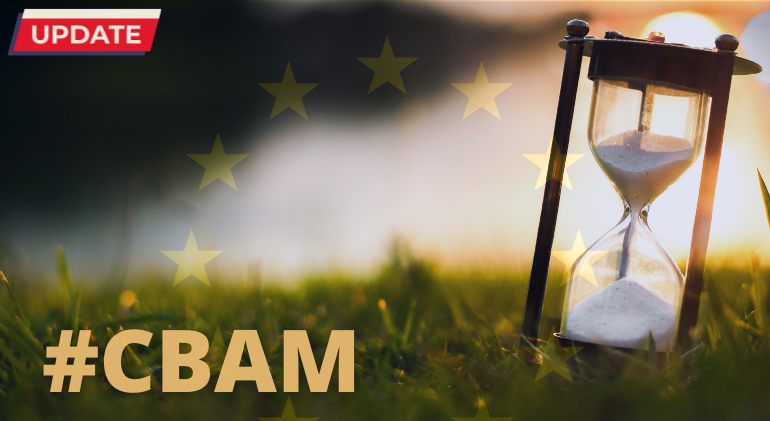

In anticipation of the June 7 plenary session when the European Parliament will take on the CBAM proposal, we delve into the key ideas behind and the expected game-changing impact of the regulation on international trade. In this edition of our CBAM series, find out more about how this wind of change may affect consumers, businesses and economies across the globe.
As a new policy, the Carbon Border Adjustment Mechanism (“CBAM”) is being developed to work in conjunction with the EU Emission Trading System (“ETS”) – a cornerstone of the EU’s climate change policy which has been in place since 2005. The ETS operates on the so-called “cap-and-trade” principle, imposing an annual limit on the total amount of greenhouse gases (“GHG”) that the system’s participants can emit. The cap is gradually reduced, to lower overall GHG emissions. Market participants then buy or receive emissions allowances, which they can trade with one another. Emission allowances are partly auctioned and partly given for free to industries that are at risk of carbon leakage. Carbon leakage occurs when a certain company decides to shift its manufacturing from a country with strict carbon policies to one with laxer, increasing GHGs emissions. During its 17-year existence, the ETS has produced many positive outcomes. However, by covering only companies within the EU, the ETS is insufficient on its own. This is where CBAM jumps in, by putting a levy on imported goods from countries where carbon prices are lower than those in the EU or non-existent. Under the new CBAM policy, importers will be required to purchase CBAM certificates for each metric ton of CO2 embedded in goods that are imported into the EU single market. The main goal of CBAM is to prevent carbon leakage by creating a level playing field between imported products and products covered by the ETS.
The effects of CBAM will be felt strongly by businesses both inside and outside the EU.
Companies that export to the EU from all over the world are now on notice. Exporting countries, subject to CBAM may lose net exports, and consequently jobs. On the other hand, the import of CBAM-covered goods will also in most instances become more expensive. These changes are likely to increase production costs for all manufacturing companies in the EU that rely on CBAM-covered goods in their production processes. According to the preliminary projections, the greatest impact will fall on the supply chains of industrial sectors such as automotive, construction and consumer appliances. Costs of key inputs in these industries including steel and aluminum will rise, and companies will need to take action to remain competitive.
For instance, estimates suggest that a mid-sized gasoline vehicle contains around six metric tons of embedded CO2 emissions, fifty percent of which come from the steel and aluminum used in its production. If carbon prices approach €100 per metric ton by the time the border tax is fully implemented, the levy payable on steel and aluminum alone would be around €300 per metric ton. The carbon border tax would exceed €600 if the entire supply chain were included.
Importers to the EU single market will have several options to become CBAM compliant. One option, which is least favorable, is buying CBAM certificates on the border when importing CBAM-covered goods. On the other hand, although coming under the CBAM sectoral coverage, the import of certain goods could be exempt from the CBAM levy. In this sense, countries outside the EU will most likely have two available possibilities to avoid the CBAM:
Which of these options will the countries choose remains to be seen after the economic analyses on the CBAM Regulation that many countries are currently conducting.